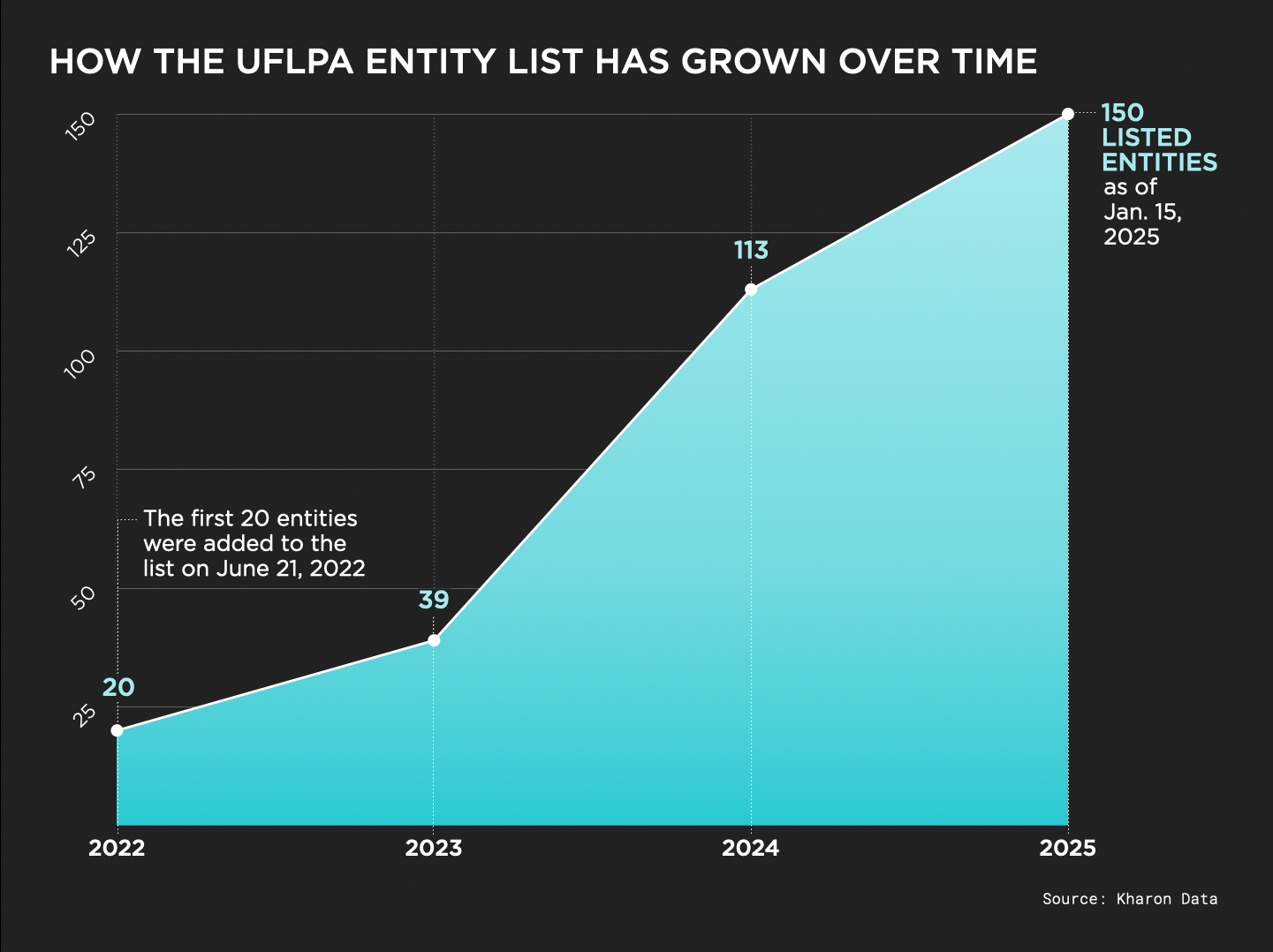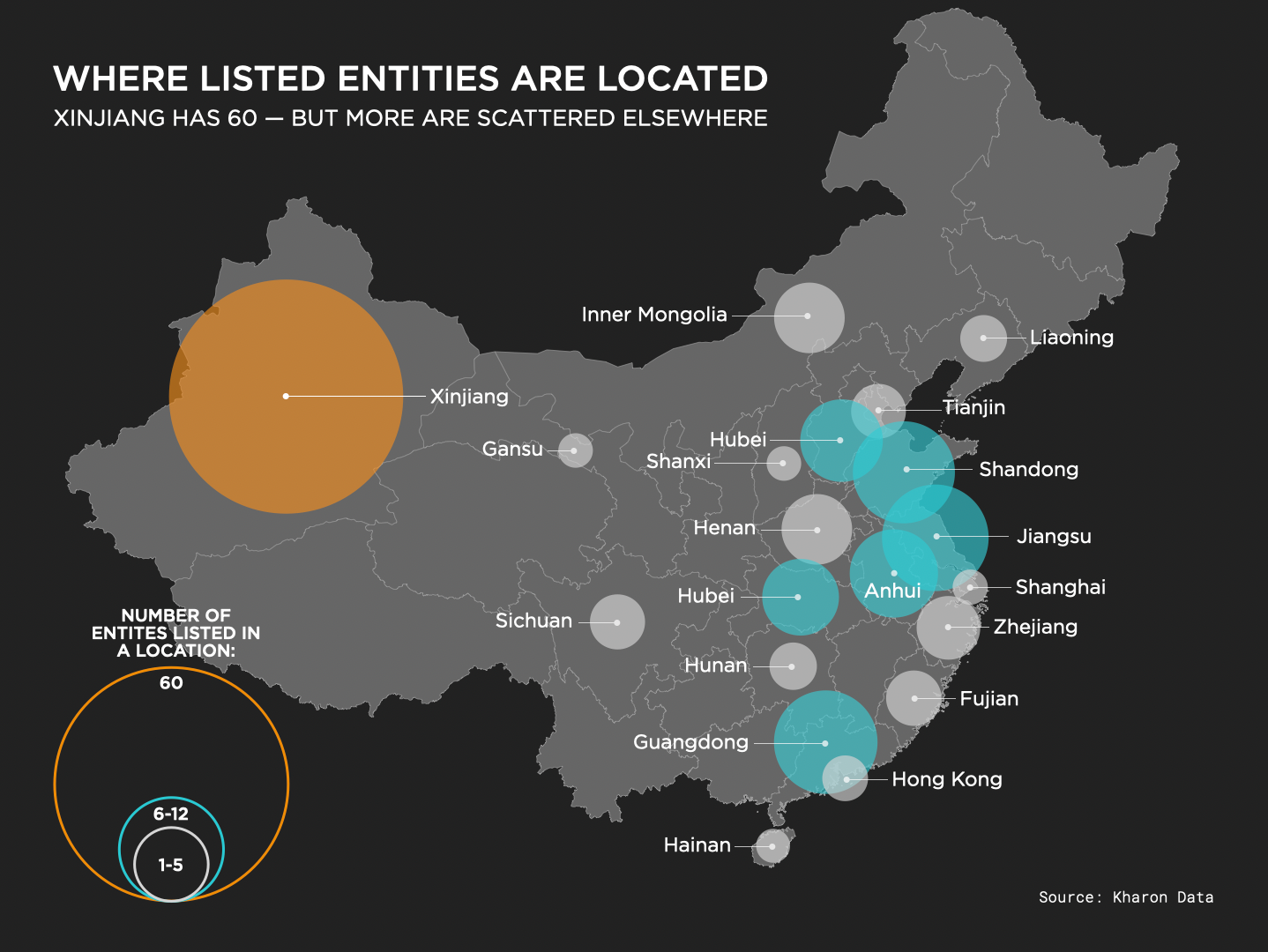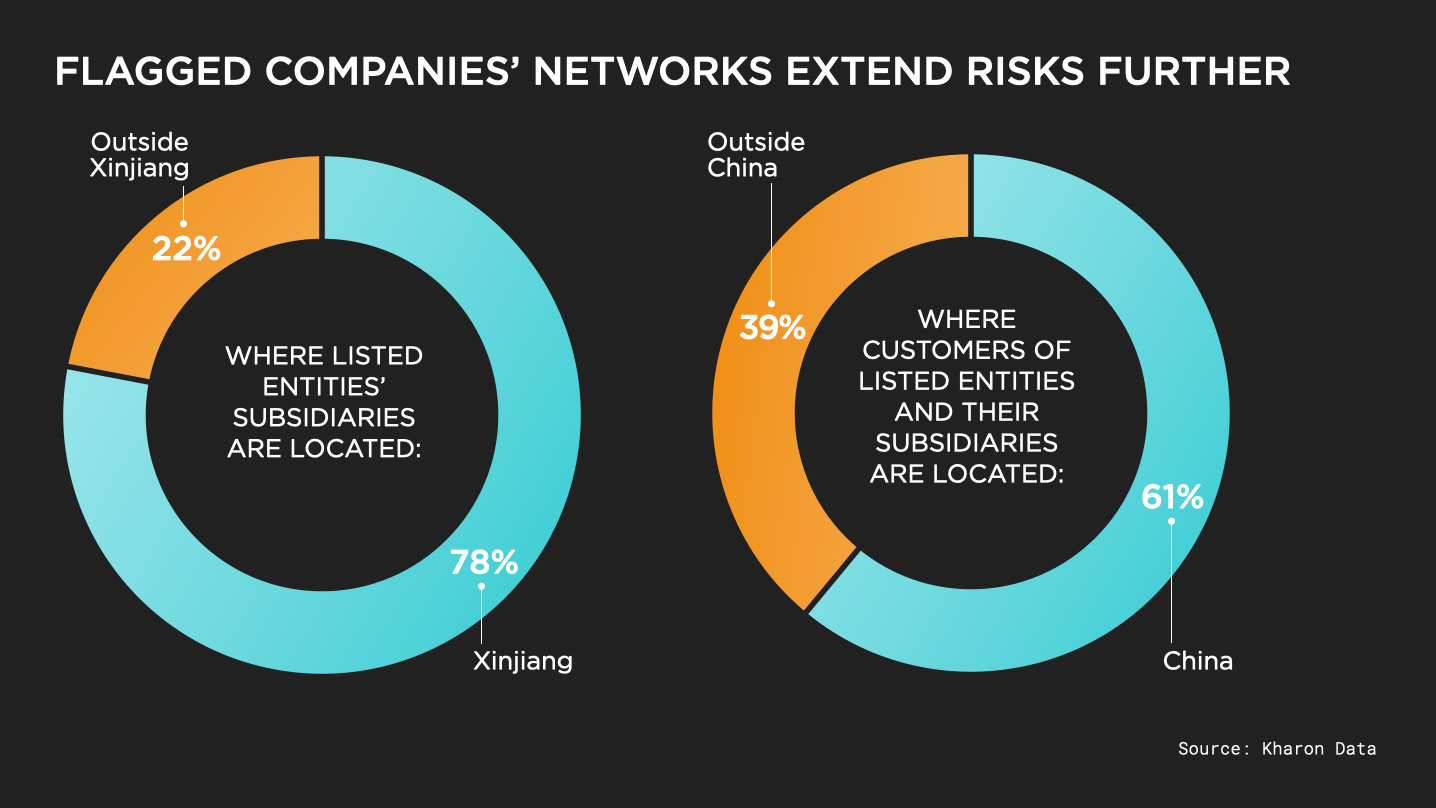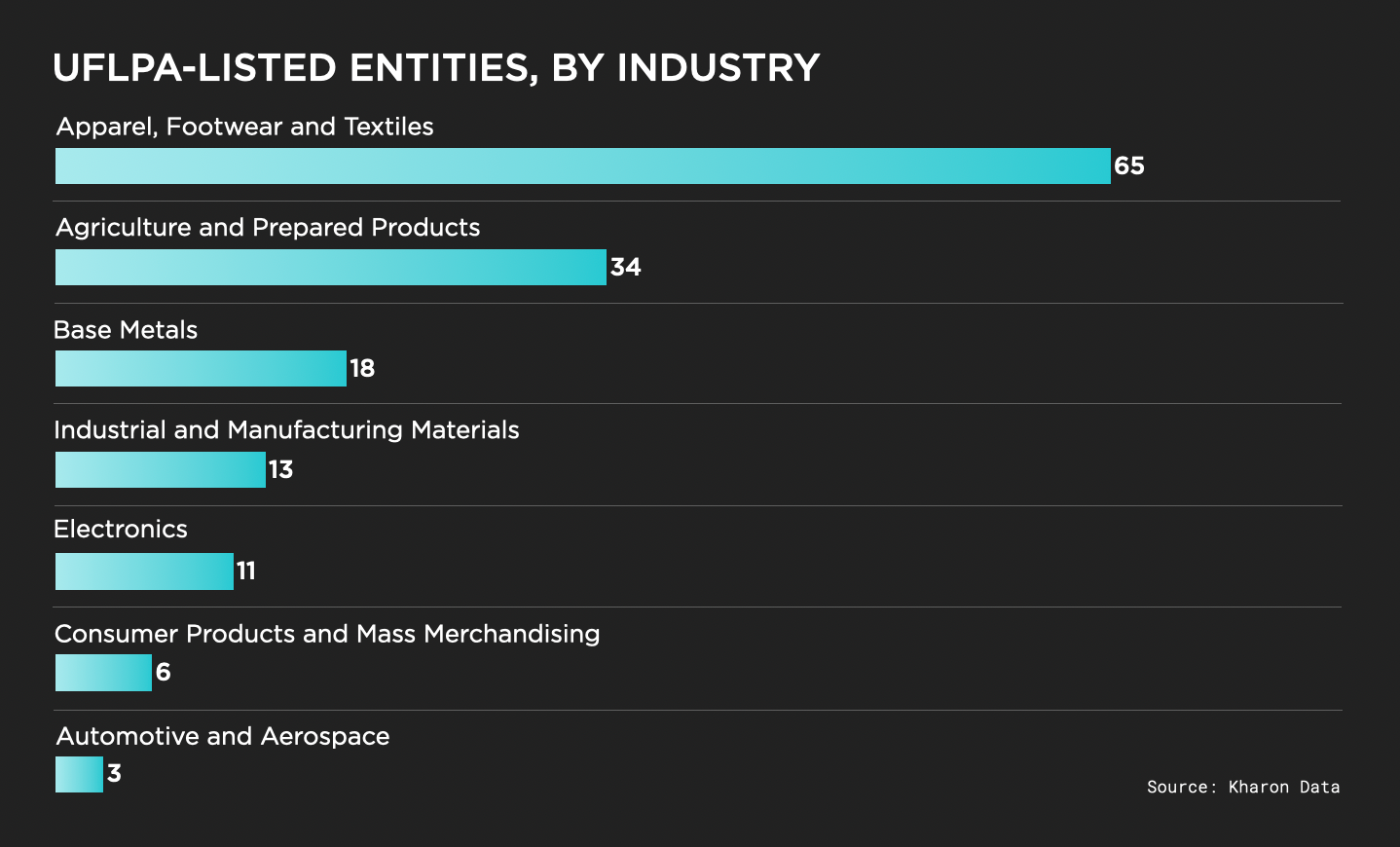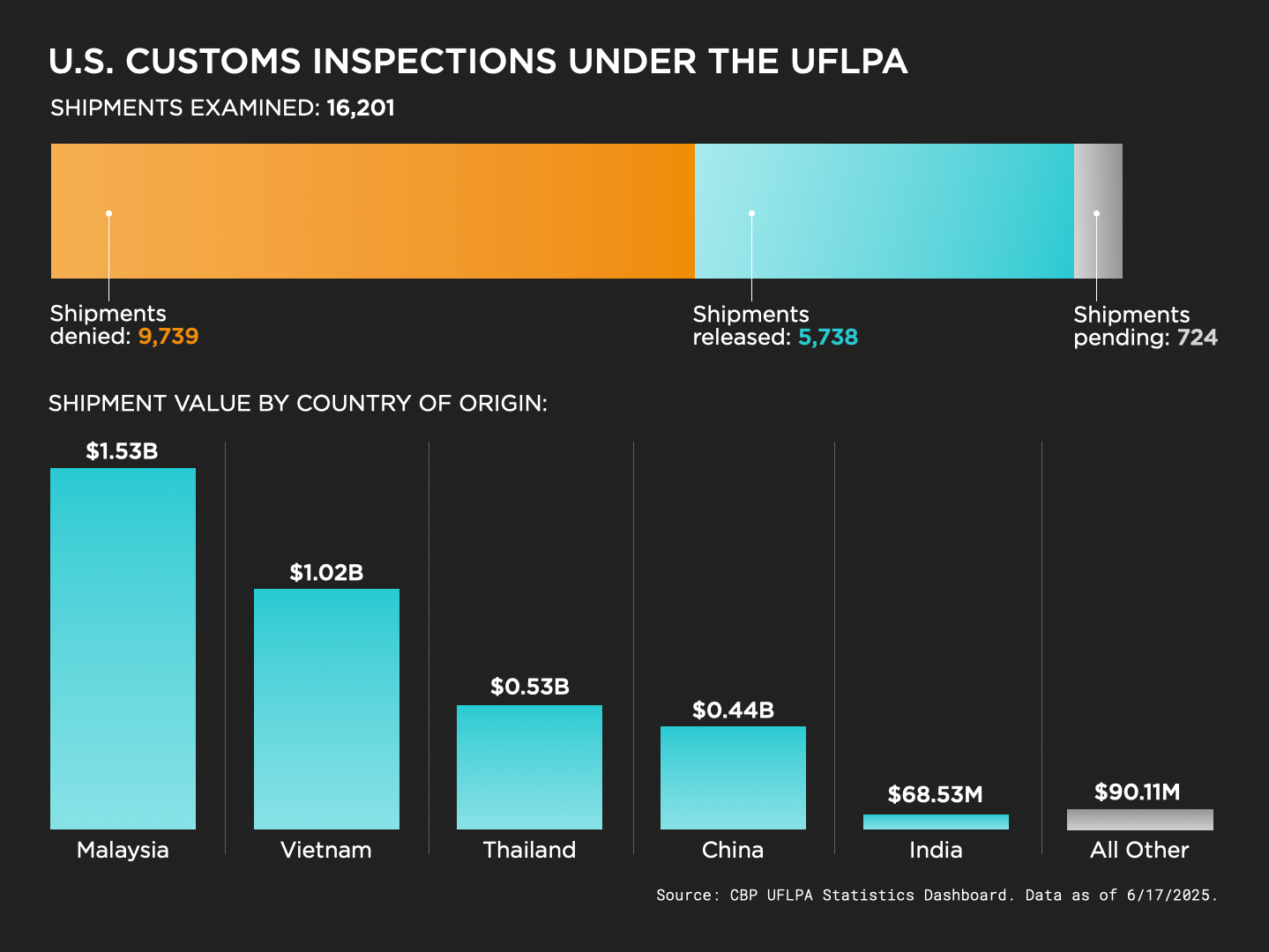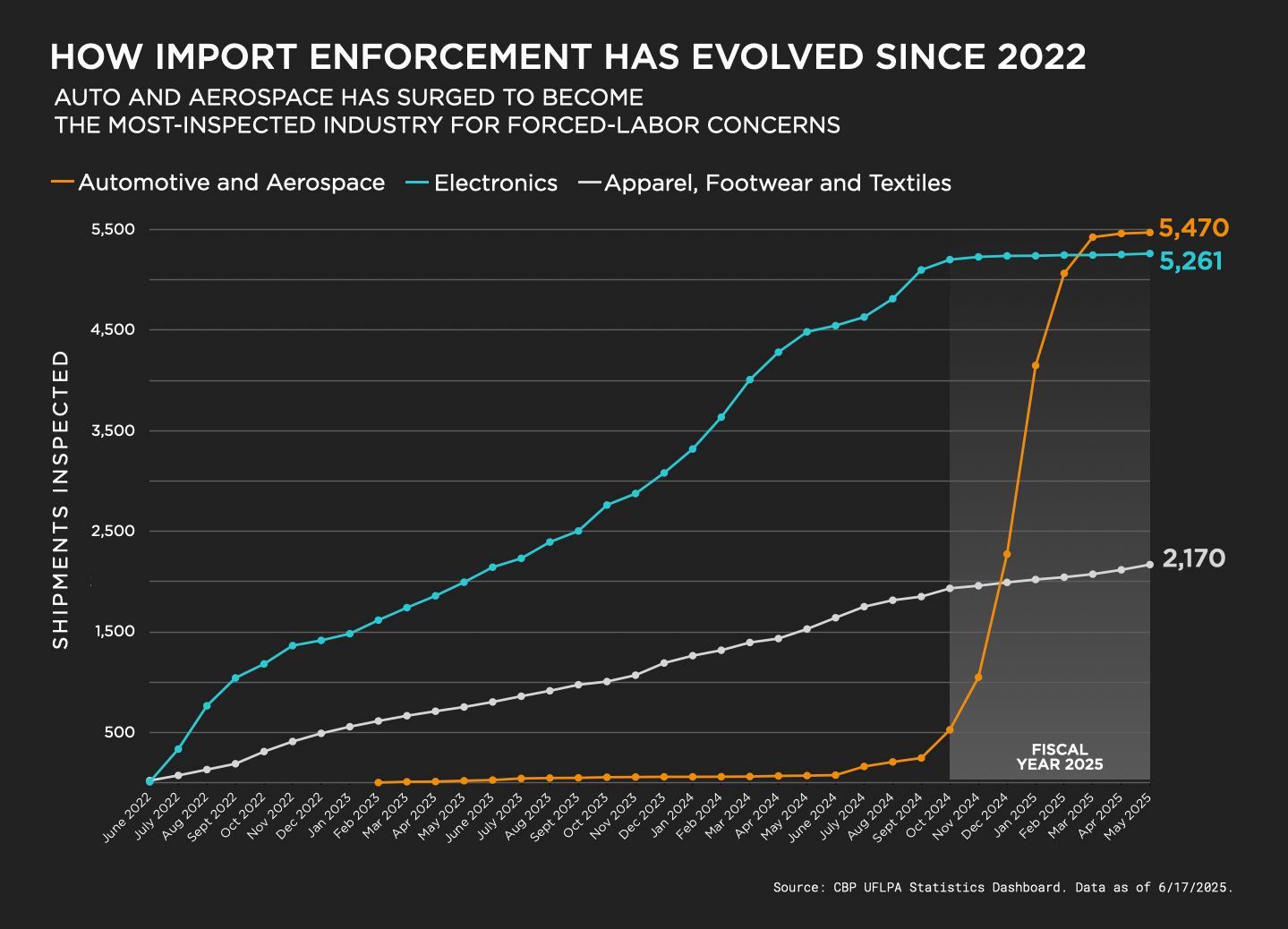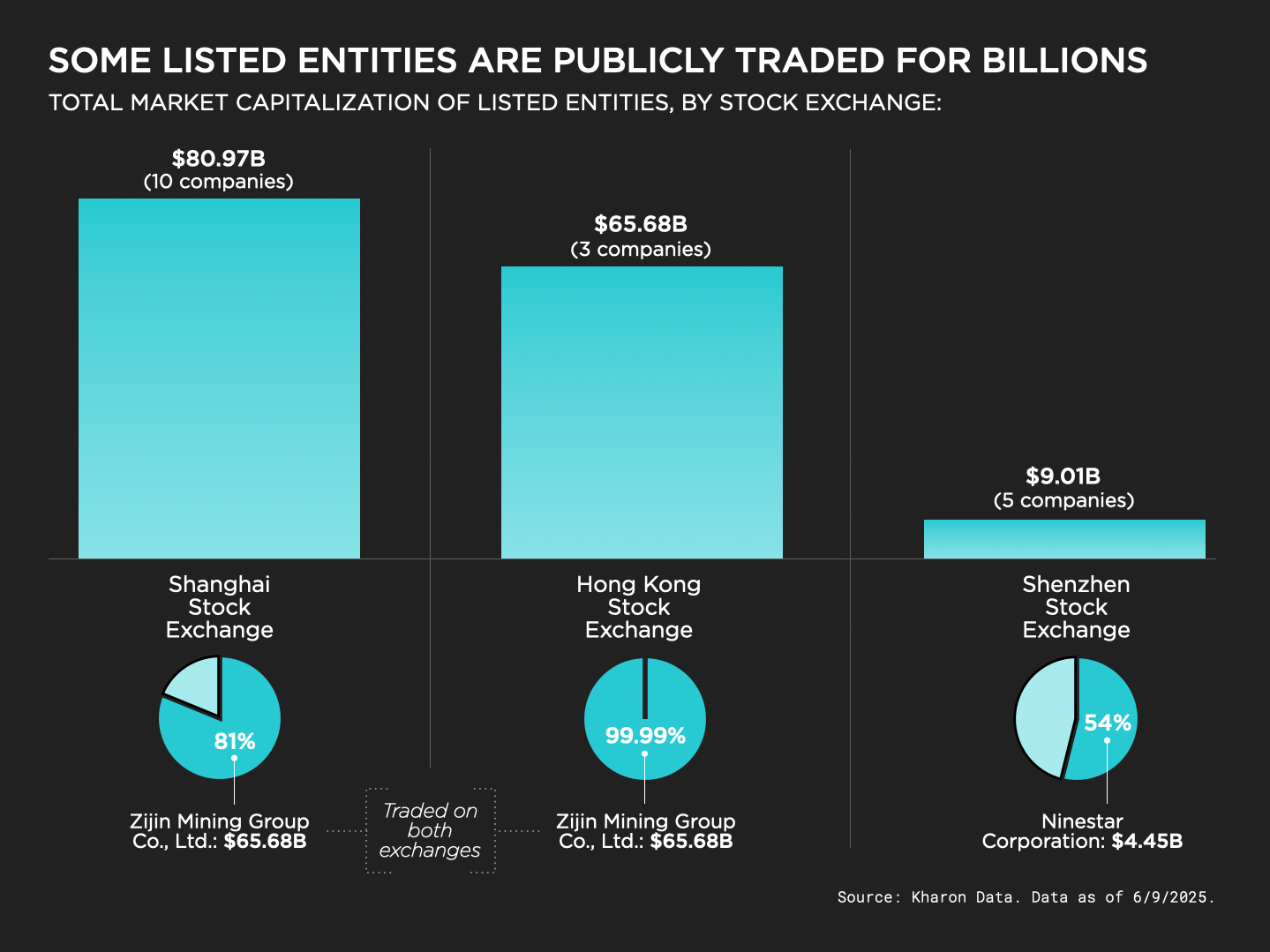The third anniversary of the Uyghur Forced Labor Protection Act (UFLPA) arrives on Saturday, against the backdrop of ever-higher U.S. tensions and competition with China, from a tariff-sparked trade war to an ongoing technological arms race and a massive potential expansion in export controls.
The UFLPA has made its own significant impact. Since the law took effect in 2022, the Department of Homeland Security has listed 150 total entities for their suspected ties to Xinjiang forced labor, while Customs and Border Protection (CBP) has seized imports of cotton, electronics, auto parts and more worth billions of dollars in all. (DHS’s list includes 144 unique entities, plus six separate legal entities it named as aliases for others on the list; Kharon analysts have considered these entities here as being UFLPA-listed as well.)
For the UFLPA’s anniversary, Kharon analyzed three years of data to highlight the grasp, scale and evolution of U.S. enforcement, as well as how far from Xinjiang the risks reach. Six in 10 companies on the UFLPA Entity List are based outside the region, and their expansive networks—thousands of subsidiaries, hundreds of customers—reflect the ongoing challenges that the public and private sectors face.
The UFLPA has made its own significant impact. Since the law took effect in 2022, the Department of Homeland Security has listed 150 total entities for their suspected ties to Xinjiang forced labor, while Customs and Border Protection (CBP) has seized imports of cotton, electronics, auto parts and more worth billions of dollars in all. (DHS’s list includes 144 unique entities, plus six separate legal entities it named as aliases for others on the list; Kharon analysts have considered these entities here as being UFLPA-listed as well.)
For the UFLPA’s anniversary, Kharon analyzed three years of data to highlight the grasp, scale and evolution of U.S. enforcement, as well as how far from Xinjiang the risks reach. Six in 10 companies on the UFLPA Entity List are based outside the region, and their expansive networks—thousands of subsidiaries, hundreds of customers—reflect the ongoing challenges that the public and private sectors face.
